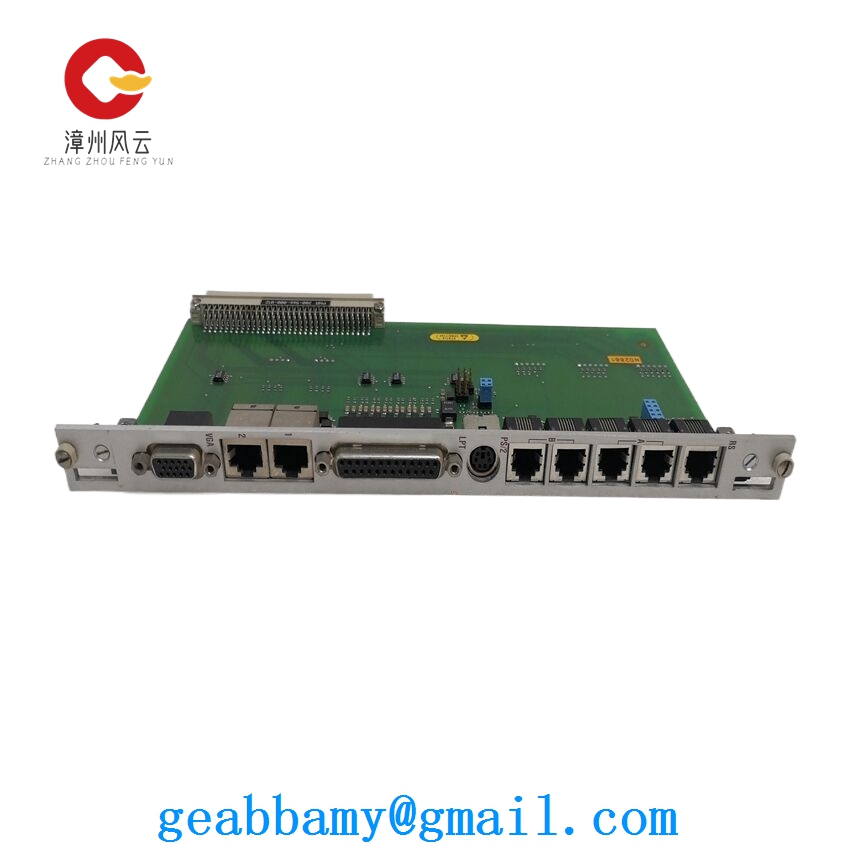Technical Parameters of ABB PM630 3BSE000434R1/4 CPU Module

The ABB PM630 3BSE000434R1/4 is a high – performance CPU module designed for industrial automation and control systems. Below are its key technical parameters:
1. Processor and Performance
- Processor Type: Equipped with a powerful and dedicated industrial – grade processor. This processor is optimized for real – time control tasks, ensuring fast and accurate processing of complex control algorithms and data. For example, it can handle multiple input/output (I/O) scanning cycles per millisecond, which is crucial for applications requiring precise timing, such as motion control in manufacturing lines.
- Processing Speed: The module has a high – speed processing capability, with a clock speed that allows it to execute millions of instructions per second (MIPS). This enables it to quickly respond to changes in the industrial process, minimizing delays and improving overall system efficiency.
2. Memory
- RAM (Random Access Memory): It comes with a sufficient amount of RAM to store program instructions, data variables, and intermediate results during the execution of control programs. The RAM capacity is designed to handle large – scale automation projects with numerous control loops, logic functions, and data logging requirements. For instance, it can store real – time process data for several minutes, facilitating troubleshooting and performance analysis.
- Flash Memory: The module has non – volatile flash memory for storing the control program, configuration settings, and system firmware. This ensures that the program and settings are retained even when the power is turned off. The flash memory has a long – term data retention capability and can be reprogrammed multiple times, allowing for easy software updates and modifications to the control system.
3. Communication Interfaces
- Ethernet Port: It is equipped with an Ethernet port that supports standard Ethernet protocols such as TCP/IP, UDP, and Modbus TCP. This enables seamless communication with other devices in the industrial network, including human – machine interfaces (HMIs), supervisory control and data acquisition (SCADA) systems, and other programmable logic controllers (PLCs). The high – speed Ethernet connection allows for fast data transfer rates, enabling real – time monitoring and control of the industrial process.
- Serial Communication Ports: The PM630 also has serial communication ports, such as RS232 and RS485. These ports are used for connecting to legacy devices or devices that require serial communication, such as barcode readers, printers, and some field instruments. The RS485 port, in particular, supports multi – drop communication, allowing multiple devices to be connected to a single communication line.
4. I/O Capabilities
- Digital I/O: It can be configured to work with a wide range of digital input and output modules. The digital inputs can detect the on/off states of various sensors, switches, and other digital signals in the industrial environment. The digital outputs can control actuators, relays, and other digital devices. The number of digital I/O points can be expanded by adding additional I/O modules to the system, providing flexibility in adapting to different automation requirements.
- Analog I/O: In addition to digital I/O, the module supports analog input and output modules. Analog inputs are used to measure continuous signals such as temperature, pressure, level, and flow. Analog outputs are used to control devices that require a continuous range of signals, such as variable – speed drives and control valves. The high – resolution analog I/O ensures accurate measurement and control of analog variables in the industrial process.
5. Power Supply
- Input Voltage Range: The PM630 CPU module can operate within a wide range of input voltages, typically from 20.4 V DC to 28.8 V DC. This wide voltage range makes it suitable for use in different industrial power supply environments and provides some degree of immunity to voltage fluctuations.
- Power Consumption: It has a relatively low power consumption, which helps to reduce energy costs and heat generation in the control cabinet. The low power consumption also makes it more environmentally friendly and compatible with energy – efficient industrial automation systems.
6. Environmental Specifications
- Operating Temperature: The module is designed to operate in a wide temperature range, typically from – 20°C to + 60°C. This allows it to be used in various industrial environments, including harsh conditions such as factories, power plants, and outdoor installations.
- Humidity Range: It can withstand a relative humidity range of 5% to 95% (non – condensing), ensuring reliable operation in humid industrial settings.
- Shock and Vibration Resistance: The PM630 is built to withstand shock and vibration levels commonly encountered in industrial applications. It meets relevant industrial standards for shock and vibration resistance, minimizing the risk of damage during transportation, installation, and operation.
7. Software and Programming
- Supported Programming Languages: It can be programmed using standard industrial programming languages such as ladder logic (LD), function block diagram (FBD), structured text (ST), and sequential function chart (SFC). These programming languages provide flexibility for engineers and technicians to develop control programs according to their preferences and the specific requirements of the application.
- Software Development Environment: ABB provides a comprehensive software development environment for programming, configuring, and monitoring the PM630 CPU module. The software offers features such as online debugging, simulation, and data logging, which help to streamline the development and commissioning process of the automation system.
In summary, the ABB PM630 3BSE000434R1/4 CPU module is a robust and feature – rich industrial automation component with high – performance processing capabilities, versatile communication interfaces, flexible I/O options, and excellent environmental resilience, making it suitable for a wide range of industrial control applications.


